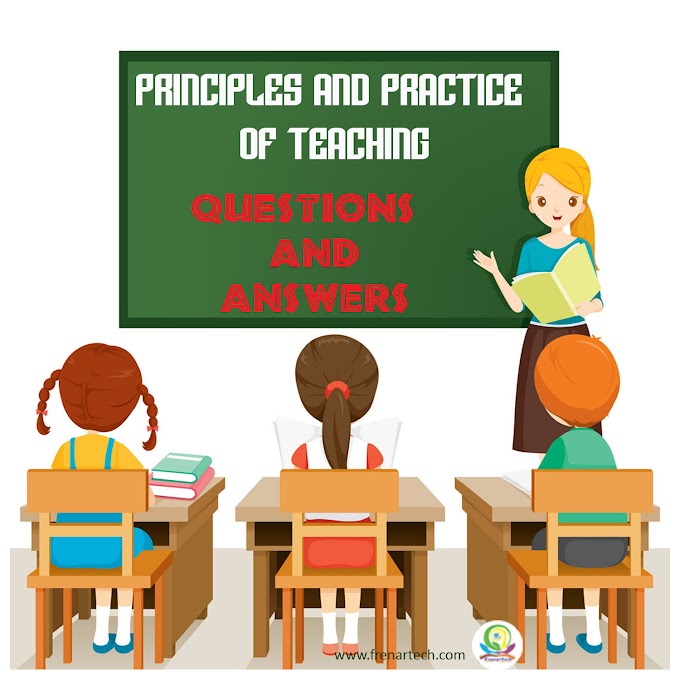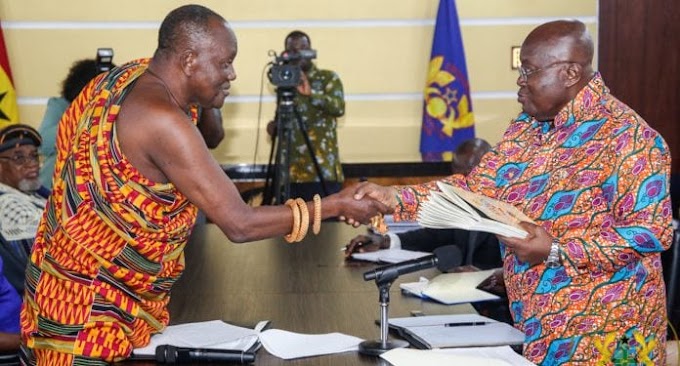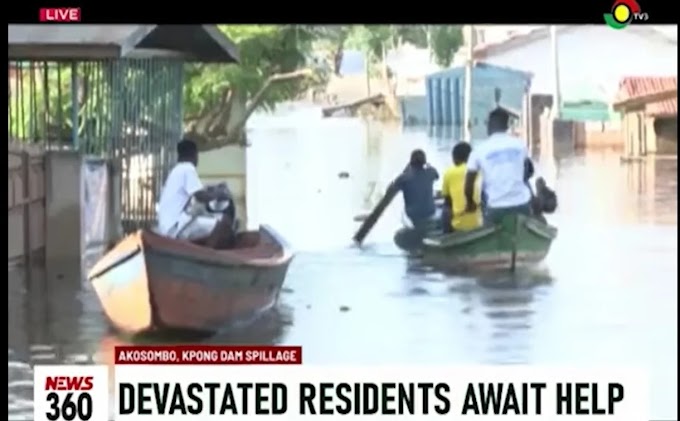1. It is the study and ethical practice of facilitating learning and improving performance by creating, using, and managing appropriate technological process and resources………………….
a. Teaching Technology
b. Educational Technology
c. Computer Technology
d. instructional Technology
ANSWER: B
2. It refers to all the ways people use their inventions and discoveries to satisfy their needs and desires …………
a. Science
b. Scientific method
c. Technology
d. invention
ANSWER: C
3. Araba hit her brother. To stop Araba from hitting her brother again, their mother took Arabas toys away. This is an example of ……………..
a. vindictive conditioning
b. observational learning.
c. positive punishment
d. negative punishment
ANSWER: C
4. Which of the following best describes AECTs definition of education technology?
a. the study and ethical practice of facilitating learning and improving performance
b. the application of technological processes to improve education.
c. the study and ethical practice of improving performance in education
d. the study and ethical practice of facilitating student learning.
ANSWER: A
5. Which of the following is NOT a characteristic of non-formal education?
a. it takes place outside the realm of formal education
b. it is conscious and deliberate
c. it is organized for a heterogenous group
d. it is not compulsory as compared to formal education.
ANSWER: C
6. Though many educators tend to think of technology as devices, the definition of educational technology encompasses…………….
a. combination of media and computer devices.
b. gadgets and processes
c. combination of hardware and software
d. Human resources and intangibles.
ANSWER: B
7. Though many educators tend to think of technology as devices, the definition of educational technology encompasses …………………………
a. combination of hardware and software
b. Human resources and intangibles.
c. gadgets and processes
d. combination of media and computer devices.
ANSWER: C
8. Educational Technology emphasizes the application of systems approach to the study of the multidimensional problems of education. Which of the following areas does it seek to cover?
i. Educational planning and organization, ii. Psychology of learning, iii. Production of teaching and learning.
a. II and III only
b. I and III only
c. I, II and III
d. I and II only.
ANSWER: B
9. The following are phase of application of Educational technology in teaching learning, EXCEPT………
a. revision
b. exhibiting proper behavior
c. setting learning objectives
d. designing specific learning experience
ANSWER: B
10. It refers to the systematic ways of applying techniques as well as the use of inventions and discoveries to satisfy the desires of people……………….
a. Educational Technology
b. Technology and Education
c. Research
d. Technology
ANSWER: D
11. To enable him function well on the farm, Sampson learnt most of the skills and attitudes he demonstrates today by imitating and modelling what the father does. Which type of education does this represent?
a. informal education
b. formal education
c. Vocational education
d. Non-formal education
ANSWER: A
12. One of the following is NOT a component of the definition of Educational Technology as given by AECT, 2008 ……………………….
a. study and ethical practice
b. Recycling of technological processes and resources
c. Improving performance
d. Facilitating learning
ANSWER: B
13. All the following are benefits of educational technology EXCEPT………………………..
a. it facilitates assessment of student learning
b. it facilitates research in education.
c. Students can learn at their own pace
d. it promotes student plagiarism
ANSWER: D
14. Which of the following is the main objective of Educational Technology?
a. Evaluate
b. Orient
c. Facilitate
d. integrate
ANSWER: C
15. Mr. Mensah is a primary school teacher but due to his love for fashion, he learnt how to make dresses and clothes for both males and females with a friend to enable him to earn an extra income.
Which type of education will you associate this with?
a. Informal education
b. Business education
c. Formal education
d. Non-formal education
ANSWER: D
16. In Ancient Greek when people talked of Art, they were talking of all the following EXCEPT……………
a. Techniques
b. ideas
c. skills
d. behaviours
ANSWER: D
17. Which of the following is /are importance of educational technology?
i. it facilitates assessment of student learning, ii. It facilitates research in education, iii. It increases collaboration among learners, iv. It makes education inaccessible to people.
a. I, II and IV only
b. I, II, and III only
c. I, III and IV only
d. III and IV only
ANSWER: B
18. Which of these is NOT the purpose of technology used in schools?
a. As productive tools for school administration
b. To provide simulations and virtual reality experiences for cognitive and extended learning.
c. To teach, drill, and practice with digital content.
d. To filter information to students.
ANSWER: D
19. Which ONE of the following is a characteristic of Informal Education?
a. Planned with a particular end in view
b. Well-defined and systematic
c. Limited to a specific period
d. There is no conscious effort in its execution
ANSWER: D
20. This form of education does not lead to a formal certificate and is purposely organized to serve the need of an identified group. Identify this form of education in the given list………………..
a. Formal Education
b. Semi-Formal Education
c. Non-Formal Education
d. Informal Education
ANSWER: C
21. Which of the following is an example of process technology?
a. Operating System
b. Research finding
c. RAM
d. Process
ANSWER: C
22. Educational Technology emphasizes the application of systems approach to the study of the multidimensional problems of education. Which of the following areas does it seeks to cover?
I. Educational planning and organization, II. Psychology of learning, III. Production of teaching and learning.
a. I and II only
b. II and III only
c. I, II and III
d. I and III only
ANSWER: D
23. Which of the following is NOT a characteristic of non-formal education?
a. It is not compulsory as compared to formal education
b. It is organized for a heterogeneous group
c. It is conscious and deliberate
d. it takes place outside the realm of formal education
ANSWER: B
24. Which of the following subject was not taught during the Age of the One-Room schoolhouse in the history of education technology?
a. Geography
b. Science
c. Writing
d. History
ANSWER: B
25. Which of the following is the best example of a teacher applying a constructivist approach to student learning?
a. science teacher models the correct procedures for performing complex experiments before having students perform the experiments.
b. Math teacher encourages students to use hands-on materials and real-world problem to acquire new concepts and practice skills.
c. Language arts teacher provides students with a concrete reward each time they turn in a written assignment that is free of errors.
d. Social studies teacher uses visual aids and a logical progression of ideas when presenting lectures about new or unfamiliar topics.
ANSWER: B
26. New behaviours or changes in behaviours are acquired through associations between stimuli and responses. This is in line with_____________
a. Behavourism
b. Constructivism
c. Humanism
d. Cognitivism
ANSWER: A
27. The goal of instruction is not to teach information, but to create situations or learning environments that will enable leaners to interpret information from their own understanding. This is the perspective of the _________
a. Connectivism
b. Constructivism
c. Cognitivism
d. Behaviourism
ANSWER: B
28. Which ONE of the following tools will automatically grade multiple choice items?
a. Scamtron
b. Scantron
c. Centrom
d. Centrum
ANSWER: B
29. Behaviourists opine that reinforcement is to increase the antecedent behavior as punishment is to __
a. serve as a deterrent to other students.
b. deter students from misbehaving
c. decreasing the antecedent behavior
d. the use of cane in the classroom
ANSWER: C
30. After a workshop in educational technology, Mr. Mensah understood that educational technology help him in teaching learning EXCEPT.
a. It makes teaching and learning easier
b. It facilitates research in education
c. Learners becomes indiscipline
d. It increases collaboration among learners
ANSWER: C
31. One of the following is not an importance of Educational Technology _____________
a. Ease of access to information
b. De-facilitation of research in education
c. Enhancement of teaching and learning process
d. Making education very accessible.
ANSWER: B
32. The learning theory that emphasizes the teacher acting as a facilitator, guiding and supporting learner in the process of knowledge acquisition is classified as _____________
a. realism
b. constructivism
c. cognitivism
d. behaviourism
ANSWER: B
33. Mrs. Ansah does not involve her students during lesson delivery, because she holds the view that her students have nothing to offer during the teaching and learning process. Madam Lucy can be identified with the _________
a. Cognitivism
b. Constructivism
c. Dis-associationism
d. Behaviourism
ANSWER: A
34. One of the following is Not Macro-Objective of Educational Technology. Identify it ______
a. Identification man-material resources and strategies for achieving aims of education.
b. Development of models for to improvement of process of teaching and learning.
c. Identification of the available teaching-learning material and resources.
d. Identify educational needs and aspirations of the community
ANSWER: D
35. This means that technologies are used to introduce, reinforce, supplement, and extend knowledge or skills to the learners_______
a. instructional Technology
b. Educational Media
c. Instructional Integration
d. Technology Integration
ANSWER: A
36. A response is strengthened as something considered unpleasant is removed. This is a typical example of _____________
a. positive reinforcement
b. negative punishment
c. negative reinforcement
d. positive punishment.
ANSWER: C
37. Kwame was one hour late to class. As a result, he was not allowed to take his first break. This is a typical example of ________
a. Positive Punishment
b. Negative Reinforcement
c. Negative Punishment
d. Positive Reinforcement
ANSWER: A
38. A group of people with varying professional backgrounds are taken through a 3-day training in computer hardware repairs, which type of education will you associate this with ___________
a. Informal education
b. Non-formal education
c. Formal education
d. Technology education
ANSWER: B
39. Educational Technology course has truly paved the way for learner to become?
a. Honest, wise, aware
b. Effective, honest, wise
c. Aware, appreciative, equipped
d. Creative, wise, honest
ANSWER: C
40. Technology in education has to do with ____
a. the application of technological procedures
b. the application of technological process.
c. the application of technological proceedings.
d. the application of technological products.
ANSWER: B
41. Negative reinforcement refers ___________
a. any consequence where something pleasurable is added.
b. any consequence where something pleasant is taken away.
c. punishment which discourages behavior.
d. any consequence where something unpleasant is taken away.
ANSWER: B
42. In one of the theories below, information processing leads to understanding and retention ____
a. Cognitivism
b. behaviourism
c. connectivism
d. constructivism
ANSWER: A
OTHER LIKELY PAST QUESTIONS AND ANSWERS
1. I am the greatest aspect of the educational objectives. Without me, education is meaningless. Who am I?
a. Affective domain
b. Cognitive domain
c. Psychomotor domain
d. Self-domain
ANSWER: B
2. Technology is the complex of human activity which is concerned with the use of …
a. inventions and discoveries to satisfy human needs and desires.
b. men, machine, ideas and procedures to achieve a desired goal.
c. soft technology and hard technology in education.
d. the findings of art and science to solve human problems.
ANSWER: B
3. Based on the assumption of the Association of Educational Communications and Technology (2008), I am highly regarded as the essence of educational technology. Who am I?
a. Facilitate learning and improve performance
b. Make teaching and learning Interesting
c. Study and ethical practice
d. Widen the scope of the learning experience
ANSWER: A
4. Field trips are one of the special ways through which an instructor imparts or inculcates knowledge in the learner. Which aspect of educational technology from the following, can this be observed? Instructional …
a. devices
b. methodologies
c. models
d. techniques
ANSWER: B
5. In instructional technology, ONE of the following are designed to provide realistic imagery and substitute experience to enrich curricular experiences of many kinds. Instructional …
a. devices
b. methodologies
c. models
d. techniques
ANSWER: A
6. “My aim is to help diffuse and adopt innovative ideas, which are derived through research, inventions, social, and curriculum change”. Who am I? Instructional … a. devices
b. methodologies
c. models
d. techniques
ANSWER: D
7. Under this principle of learning, every learning experience does not have to be entirely successful, nor does the student have to master each lesson completely. Who am I?
a. Effect
b. Intensity
c. Primacy
d. Recency
ANSWER: A
8. Using the knowledge from the Behaviourist perspective, arrange the following in the order they should appear when presenting a radio lecture
i. The radio lecture should proceed in a conversational cycle
ii. Prepare the script of the radio lecture and rehearse it ahead of time
iii. Inform students of time and dates for the radio lecture
iv. State the objectives clearly in behavioural terms a. iv, iii, ii, i
b. iii, iv, ii, i
c. ii, iii, iv, i
d. iii, ii, i, iv
ANSWER: B
9. “I am pivotal in the processes of perception, communication and learning”. Who am I?
a. Channel
b. Feedback
c. Learner
d. Message
ANSWER: C
10. In selecting instructional media, a teacher must first consider the nature of …
a. content
b. learners
c. media
d. objective
ANSWER: D
11. By the end of the lesson, without notes, textbooks or any library materials, student will be able to define Educational Technology in the manner that will be accepted by an expert from the field. In the above stated objective, according to the ASSURE model the underlined statement specifies …
a. behaviour
b. condition
c. degree
d. none of the options
ANSWER: B
12. In the ASSURE instructional model, the mark of a good set of learning objectives is in conformity to the ABCDs. The following are the acronyms EXCEPT… a. audience
b. behaviour
c. conditions
d. dimension
ANSWER: D
13. Which ONE of the following instructional design models focuses typically on how the content will be taught rather than on what is to be taught?
a. ADDIE Model
b. ASSURE Model
c. Backward Design Model
d. Kemp Model
ANSWER: C
14. Which ONE of the following instructional designs focuses on distinguishing between what the students already know and what they have to know after completing the course?
a. Kemp Model
b. Dick and Carey Model
c. ASSURE Model
d. ADDIE Model
ANSWER: D
15. Which type of learning is used to describe learning that mixes various event-based activities, including face-to-face classrooms, live e-learning and self-paced learning?
a. Blended
b. Mobile
c. Selected
d. Virtual
ANSWER: A
16. Proper implementation of technology media will lead to …
a. engaging students in an unnecessary activities.
b. improvement of students learning and achievement.
c. poor students’ performance in learning
d. reduce students’ performance in learning
ANSWER: B
17. The University of Education, Winneba’s use of the OSIS software can be described as?
a. Computer-assisted instruction
b. Computer-based software
c. Computer-mediated instruction
d. Distance learning software
ANSWER: A
18. Which ONE of the following terms best explains the idea that “the role of instructional media and technologies in the classroom depends very much on teachers’ beliefs about how learners learn”?
a. Principles of learning
b. Technology in education
c. Technology of education
d. Theories of learning
ANSWER: D
19. Dr. Brako used his Samsung Galaxy phone to capture some sessions of the parliamentary proceedings in order for him to effectively teach his pupils how parliamentary proceedings are carried in Ghana. Which instructional technique would you classify this approach by Dr. Brako?
a. Adaptive Production technique
b. Creative Invention
c. Imitative Production technique
d. Mastery Production
ANSWER: B
20. Using video conferencing to facilitate effective and efficient teaching and learning is classified under which of the following instructional media? a. Audio-visual instructional aids
b. Four dimensional instructional media
c. Three dimensional instructional media
d. Visual instructional aids
ANSWER: B
21.The stage of communication where a student becomes aware of events and objects in his/her own environments, through the sensory modalities can be referred to as
a. inter- personal
b. Intra -personal
c. Perception
d. None of the choices
ANSWER: C
22. In teaching the English vowels, the English teacher with an exposure in educational technology makes the learners not only identify the various vowels in the English language but also see the relationship between these vowels. The learners can be said to be operating at the …
a. differentiation stage
b. diffusion stage
c. integration stage
d. teaching stage
ANSWER: A
23. A situation where an educational technologist repeats key words, projects them, allow students to download them and then reviews them frequently, can be classified as
a. Communication deficiency
b. Communication redundancy
c. Communication relentlessly
d. Communication reluctance
ANSWER: B
24. Mavis and Priscilla, both Economics students perceive themselves as confident students and contribute frequently during class discussions without any intimidation of whatsoever from peers and lecturers. Their behaviour is based on all the following concepts EXCEPT … a. self-esteem
b. self-efficacy
c. self-concept
d. self-actualisation
ANSWER: A
25. In an informal education, students perceive lecturers to be unsociable and crafty. As a trained educational technology student, which of the following expresses the students’ perception?
a. Learned perception
b. Objective perception
c. Self-perception
d. Subjective perception
ANSWER: D
26. The following are the ways to overcome barriers in communication, except.
a. Taking the receiver more seriously
b. Using gestures or body language
c. Delivering messages skillfully
d. Focusing on the receiver
ANSWER: B
27. This type of communication is between two people but can involve more in informal conversations
a. Intrapersonal communication
b. Interpersonal Communication
c. Verbal communication
d. Written communication
ANSWER: B
28. One of these is not among the major modes of classroom communication
a. watching
b. reading
c. writing
d. gestures
ANSWER: D
29. Poor ventilation, noise and unpleasant odors are obstacles to effective classroom communication. These can be described as:
a. day dreaming
b. environmental discomfort
c. special discomfort
d. lack of interest
ANSWER: B
30. All materials & equipment used for teaching and learning in the 21st century are referred to as:
a. local media
b. educational media
c. digital tools
d. computer
ANSWER: B
31. One of the reasons for using technology tools is that it allows:
a. teaching and learning to be uninteresting.
b. prolong teaching and learning process.
c. Makes learning affordable
d. easy access to reach around the world.
ANSWER: D
32. This theory emphasizes that knowledge is ever changing and different for every person.
a. Constructivism
b. behaviorism
c. Cognitivism
d. Humanistic
ANSWER: A
33. At this historical age, printing and documentation of events started.
a. Mass Communication
b. Book/chalkboard
c. Stone age
d. Digital age
ANSWER: B
34. One of the following will help us to explain processes that are difficult to "see" in static form
a. Mass media
b. Motion media
c. Non-Projected Media
d. Animation
ANSWER: B
35. One of these is not a graphic educational media
a. poster
b. maps
c. flash cards
d. radio
ANSWER: D
36. The integration of technology in the instructional process must be geared toward:
a. disregarding development of creative and critical thinking
b. inefficiency of teachers
c. reduces students’ performance in learning.
d. interactive, meaningful, and collaborative learning
ANSWER: D
37. Prior to this period, learning used to be “one on one” teacher interaction
a. Stone Age
b. Book age
c. Communication
d. Digital Age
ANSWER: C
38. In this type of education, education continues in life. It never ends:
a. Formal Education
b. Informal education
c. Non-Formal Education
d. Digital education
ANSWER: B
39. Some of the recent technological developments in education include the following, except:
a. the development of social networking tools
b. the introduction of web 2.0 and its components
c. the development of learning management systems
d. The introduction of television
ANSWER: D
40. One of the following media allows all students to view the same material at the same time
a. Mass media
b. Projected media
c. Hyper media
d. Non-Projected Media
ANSWER: B
41. What is the main processing component or brain of the computer?
a. Adapter board
b. Mother board
c. CPU microprocessor
d. Hard drive unit
ANSWER: C
42. A driver education teacher might use this kind of software to let students "practice" driving before actually getting in a car. a. tutorial
b. drill and practice
c. problem solving
d. simulation
ANSWER: D
43. Which is currently the most popular vehicle for delivering distance learning courses?
a. videoconferencing
b. broadcast video
c. teleconferencing
d. Internet
ANSWER: D
44. An example of Instructional Aid in Chemistry lab is
a. Test tube
b. Chemical
c. Textbook
d. Everything in the lab.
ANSWER: D
45. An example of Audio Visual medium:
a. Radio
b. Cassette player
c. Camcorder
d. Billboards
ANSWER: C
46. The communication process is initiated by the:
a. message
b. receiver
c. Source
d. Channel
ANSWER: C
47. Which one of the following stands for the type of instruction aided or carried out with the help of a computer.
a. CAD
b. e-learning
c. CAI
d. m-learning
ANSWER: C
48. One of the following involves a complex process that is creative, active, and iterative.
a. Educational Technology
b. Instructional Technology
c. Instructional Design
d. Curriculum Design
ANSWER: C
49. One of these is not a characteristic of CAI
a. prompt feedback to the learners
b. provision of possible answers
c. learners controlled instruction
d. lessons with more than one purpose.
ANSWER: D
50. One of the following media allow us to experience concepts in a manner that is not available in “real life” – i.e. Magic School Bus
a. Mass media
b. Motion media
c. Non-Projected Media
d. Hyper Media
ANSWER: B
51. Educational media perform all these functions, except:
a. Focusing attention and motivating learning
b. making learning real and abstract
c. lending support to what teacher says
d. increasing learning
ANSWER: D
52. As of today one of the following is the fastest information processing machine.
a. Telephone
b. Television
c. Computer
d. Video
ANSWER: C
53. All teaching activities are directed towards one of the following:
a. learning
b. planning
c. acting
d. facilities
ANSWER: A
54. The quickest source of educational research:
a. Encyclopedia Britannica.
b. Internet.
c. Text books.
d. Library
ANSWER: B
55. The application of computer in learning school subjects is referred to as;
a. Computer teaching method
b. Computer learning method
c. Computer assisted learning
d. Computer school subject
ANSWER: C
56. A renowned Economist, used instructional and educational media to support the learning of consumer behaviour through examples and visual elaboration. Richard, a student of Economics believes this approach dwells on the principle of intensity.
a. True
b. False
ANSWER: A
57. Sandra was admitted to UEW as a Home Economics student and was introduced to the marker and board method of teaching. After a successful completion, Sandra was posted to University Practice Basic School. Till date, she uses the marker and board method in her instructional delivery. Her technique can be classified as an adaptive instructional delivery.
a. True
b. False
ANSWER: A
58. In the ASSURE instructional model, the third acronym is synonymous to the production types of instructional media.
a. True
b. False
ANSWER: A
59. All instructional technologies are educational technologies but NOT all educational technologies are instructional technologies.
a. True
b. False
ANSWER: A
60. The concept of educational technology is only applicable to formal education and non-formal education but NOT informal education.
a. True
b. False
ANSWER: B




















.jpeg)
